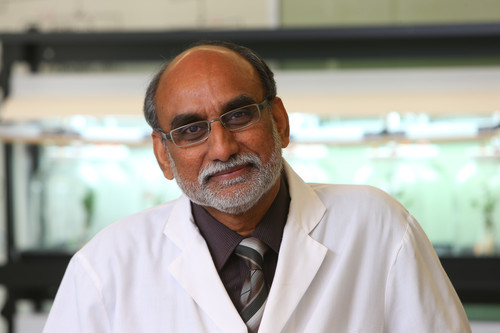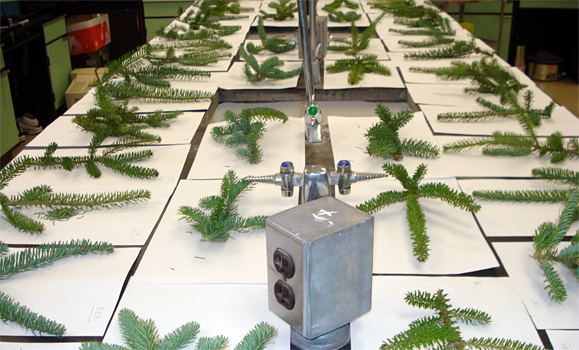Christmas tree growing and exporting is a nearly $100 million industry in Atlantic Canada employing 20,000 people. In the future, most of these trees may be “SMART Balsams.”
Dalhousie Faculty of Agriculture researcher Raj Lada, driven by a commitment to rural sustainability, is providing support and research to innovate the Christmas tree industry in our region.
 Dr. Lada and his team, through the national Christmas Tree Research Centre (CRC) are working strenuously to develop products and technologies to enhance needle retention as well as produce what they call a "SMART Balsam," which epitomizes an ideal tree: full, sturdy architecture, unique fragrance, blue-green needles and pest-free, with needle retention lasting for up to three months or more.
Dr. Lada and his team, through the national Christmas Tree Research Centre (CRC) are working strenuously to develop products and technologies to enhance needle retention as well as produce what they call a "SMART Balsam," which epitomizes an ideal tree: full, sturdy architecture, unique fragrance, blue-green needles and pest-free, with needle retention lasting for up to three months or more.
This research has recently been boosted by funding through a new collaborative research agreement between Dalhousie and the the SMART Christmas Tree Research Co-operative Ltd.
The Co-operative is contributing $350,000 to the Christmas Tree Research Centre to further the Faculty’s research into needle retention of Balsam Fir trees — a $6 million project, in total.
A supportive partnership
The SMART Christmas Tree Research Co-operative was created through the Christmas Tree Council of Nova Scotia as a way for all Atlantic Canadian Christmas tree producers to provide funding to further research and commercialization into this valuable industry. The co-operative is used as a mechanism to access industry funds and for commercialization purposes.
“Innovations and technologies developed by the Balsam fir Christmas tree research at Dalhousie University will take the Atlantic Canadian Christmas tree and greenery industry from a survival status to an excel and thrive status,” says Jim DeLong, president of the co-operative.
Researchers at the CRC study needle retention as their main focus in an effort to understand and discover the signals, mechanisms, factors and environmental conditions that trigger postharvest needle drop.
“Our scientists are solving real world problems with leading edge technology, in partnership with a wide variety of industries,” explains Dean of Agriculture David Gray. “Today we are contributing to the health of our local agricultural economy by helping producers grow Christmas trees that stay fresher, longer thus sustaining this vital industry in Atlantic Canada.”

Significant progress
Several innovative technologies have been and will continue to be developed to reduce needle drop and promote needle retention. Dr. Lada and have team have discovered the potential signal involved in postharvest needle loss, the biophysical factors that accelerate postharvest needle drop and some specific environmental and nutritional factors that promote postharvest needle drop. Several clones have been identified to have high needle retention duration, and the lab is leading many other discoveries as well.
Dr. Lada has established an open forum model of committees that allow for open communication and discussion among researchers in various universities, those working in the industry and Atlantic provincial government departments.
“I am very pleased to lead researchers and those working in the industry through this process as well as to be part of the change myself,” he says.

Jim DeLong, president of the SMART Christmas Tree Research Cooperative presents Dean Gray with its first cheque.
This research is being conducted at Dalhousie Agricultural campus in partnership with the Christmas Tree Council of Nova Scotia, SMART Christmas Tree Research Cooperative, Christmas tree producers; NS Departments of Agriculture and Natural Resources, NB Department of Agriculture and Aquaculture; NL Department of Forestry and Agriculture; and University of New Brunswick, under the leadership and direction of Dr. Lada.

The Christmas Tree Research Team at the Faculty of Agriculture.

